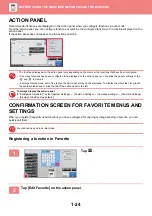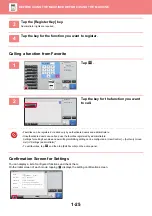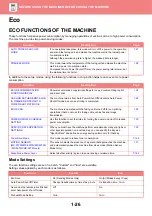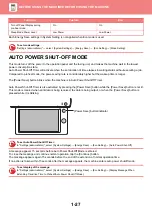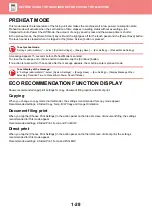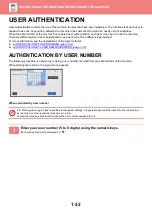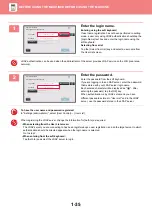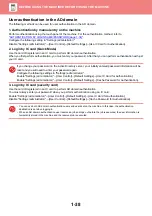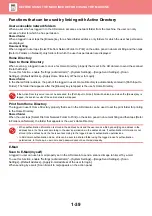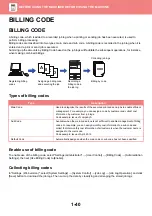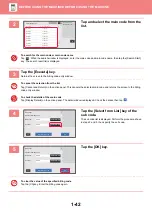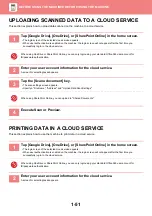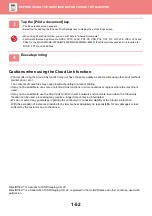
1-38
User authentication in the AD domain
The following methods can be used for user authentication in the AD domain.
1. Authentication by manual entry on the machine
Perform authentication using the touch panel of the machine. For the authentication method, refer to
"
AUTHENTICATION BY LOGIN NAME/PASSWORD (page 1-34)
Configure the following setting in "Settings (administrator)".
Disable "Settings (administrator)"
→
[User Control]
→
[Default Settings]
→
[Use IC Card for Authentication].
2. Login by IC card (Quick Mode)
Use the card ID registered in an IC card to perform AD domain authentication.
When you first perform authentication, you must enter your password. After that you can perform authentication with just
your IC card.
3. Login by IC card (security card)
Use the card ID registered in an IC card to perform AD domain authentication.
You must always enter your password when you perform authentication using an IC card.
Enable "Settings (administrator)"
→
[User Control]
→
[Default Settings]
→
[Use IC Card for Authentication].
Disable "Settings (administrator)"
→
[User Control]
→
[Default Settings]
→
[Cache Password for Authentication].
If you change your password on the Active Directory server, your initially entered password information will be
reset and you will need to enter your password again.
Configure the following settings in "Settings (administrator)".
Enable "Settings (administrator)"
→
[User Control]
→
[Default Settings]
→
[Use IC Card for Authentication].
Enable "Settings (administrator)"
→
[User Control]
→
[Default Settings]
→
[Cache Password for Authentication].
• You can use both AD domain authentication users and users set on the machine. In this case, the authentication
destination is set when logging in.
• When an AD domain authentication user reserves a job and logs out before the job is executed, the user information is
temporarily stored in the machine and the reserved job is executed.

